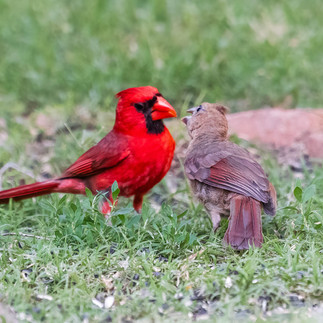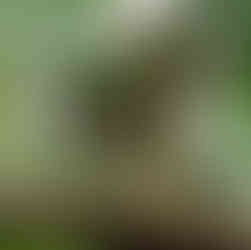Baby Bird Season
- Vicki Wilmarth
- Jul 16, 2023
- 3 min read
Updated: Apr 4, 2024

Even though the days are hot, the weeds are high and the migrant birds have travelled north, summer in the Texas Panhandle brings the joy of watching our local nesting birds produce the next generation. And feed them--over and over and over.
Birds that nest in the Texas Panhandle include Mallards, Wood Ducks, Wild Turkeys, quail, Mississippi Kites, Swainson's Hawks, Black-crowned Night Herons, Black-necked Stilts, doves, Burrowing and Great Horned Owls, Western and Eastern Kingbirds, Red-headed Woodpeckers, Eastern Phoebes, Scissor-tailed Flycatchers, swallows, wrens, Dickcissals, Bullocks and Orchard Orioles, and more.

In my backyard, I've watched House Sparrows, White-winged Doves, Blue Jays, Northern Cardinals and Black-chinned Hummingbirds successfully nest during the summer.
Of course, the most exciting birds that have ever nested in our yard are the Cooper's Hawks. Only in the last few years have these hawks started nesting in the urban areas of Amarillo. In 2020 and 2022, they chose my next door neighbor's elm tree for the nest. Because we have bird feeders and water, the hawks used our backyard as training grounds for teaching the fledglings to hunt. Considering the number of White-winged Doves and House Sparrows we feed daily, I really didn't mind if the hawks lightly pruned the herd. One of 2022's juvenile Cooper's Hawk is still buzzing our backyard feeders daily, but I haven't seen any successful kills this summer.
If there is one consistent fact about baby bird season in the Texas Panhandle, or anywhere for that matter, it is that the parents are constantly having to provide food for their young. And it is a full-time job. I watched a Northern Rough-winged Swallow at Lake Meredith bring new food to one fledgling at least every six minutes for over an hour.

All bird parents spend their summer not at the beach reading trashy novels or cooling off in the Colorado Rockies, but catching bugs over and over so that their babies will survive. And with all the rain we have experienced this year (hallelujah!), finding bugs is easy.
Of course, keeping the offspring safe is a high priority too.
Anytime I see smaller birds mobbing a hawk, I understand that it is generally because a nest is threatened. Mockingbirds, orioles, kingbirds and others are very brave parents when it comes to attacking a predator. And each time I've seen this kind of mobbing, the hawk gave up and flew away. So for a brief period, the young birds are safe.

I witnessed a crazy incident of mobbing a predator recently at Buffalo Lake National Wildlife Refuge. Three Western Kingbirds, four Lark Sparrows and even a Ladderback Woodpecker were all dive-bombing a tree, but I couldn't spot the hawk that they were trying to drive away. Finally it dawned on me that they were aiming for the other side of the tree trunk, and the predator was not a hawk.

I walked around the tree to find that the hunter was a stunning five-foot Bullsnake, and it appeared to already have successfully raided a nest. Now it was calmly heading back down the tree trunk.

Eventually, the young birds have to learn to fend for themselves. I was very proud of one of the fledgling Northern Cardinals in my backyard one night this week. The Cardinal was enjoying one of my backyard fountains when a fledgling Blue Jay tried to push the Cardinal away. Blue Jays are often bullies, and usually the other birds will give them a wide berth. But this young Cardinal held his/her ground and the Blue Jay left instead.


That young Cardinal may not be the prettiest bird yet (it takes about a year for them to mature into the beautiful birds we are used to), but it obviously has the heart of a lion.

























